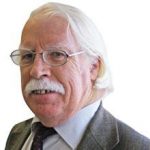Mark Patrick Hederman, OSB has already given a wide ranging appreciation in this newspaper of some of the special qualities that characterised the late poet Seamus Heaney, whose passing has been greatly mourned. But there are other things too that might be said about Heaney from the point of view of the literary historian.
Seamus Heaney was a special man certainly, but he was also well placed to take advantage of the openings that came his way.
He was, for instance, one of the generation in Northern Ireland who greatly benefited by the Government of Northern Ireland following up in 1947 the lead given by the British Education Act of 1944 which opened up wider horizons of education for working class and farming folk in Northern Ireland. ìEducate that you may be free,î the mantra of Thomas Davis, was taken seriously by many Nationalists. They seized the moment. Heaney was gifted an opportunity not open to the majority in the South.
Well educated at school in Derry, as others had been, he was able to pass into Queenís University. It was there that his first poems were published in those fugitive pamphlets that characterised the first stages of the remarkable emergence of so many poets in modern Ulster in the late 1950s.
Young poets
Some young poets never got beyond those pamphlets. However, unlike to so many of his contemporaries, Heaney was taken up by Faber & Faber, the London based firm where T.S. Eliot was the dominant director, the publishers of poets ranging from Ezra Pound to Ted Hughes.
Heaney remained for the rest of his career with his first publisher. This is no small matter, when one considers the broken backed careers of so many Irish poets, of whom the best example would be Patrick Kavanagh, who suffered through a long unpublished poetic silence between 1948 and 1960. Indeed in this respect Heaneyís career mirrors that of Yeatsí with Macmillan.
This sure and certain foundation was one which Heaney was able to build. There was always something steady, rooted, sane in his work. His first collection in 1966, Death of a Naturalist, became, for a book of poems, a remarkable ìbest sellerî. At one stride Heaney seemed to dominate the literary scene.
In that collection there is a poem on which he reflects on his farmer father tilling the soil with a spade, the eternal figure of Abel, quite Biblical in its resonance. But the son could not now use a spade. What came to his hand was his pen. He would dig with that.
Traditional life
And dig he did, cultivating his own past, the spirit of the age in which he lived, and the everlasting verities of poetry. His poetry seemed to readers around the world to draw out from the traditional life in which he had been reared a sense of permanence, the eternal present of all great art.
A poet by vocation, he was by profession a teacher, first at school, later at university level, as a professor in the US. Yet there was little truly professorial about Heaney. Certainly he had a great public presence on the speakerís platform, on television, by the open grave of a departed friend.
The status of poet was one highly admired in Celtic society, and Heaney had that same status in the eyes of many of his modern Irish countrymen. But, as the award of the Nobel Prize for Literature, it was one shared around the world.
There was something not just universal, but mythical about his poetry. It is often said that poetry is what gets lost in translation. This seems not to have been the case with Heaney. One is reminded of the remark by Claude Levi-Strauss that ìLÈ mythe est perÁu comme mythe par tout lecteur dans le monde entireî ñ myth is perceived as myth by every reader in the whole world. And the creations of Seamus Heaney seem also to be read in that mythic way by the whole world.


 Peter Costello
Peter Costello